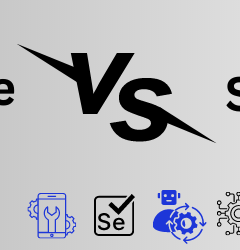22 Mar

In this article, We will see what is agile testing, the Phases of agile testing life cycle, Principles of agile testing, and more.
Agile testing is an iterative and incremental method, and it develops during the collaboration between the person or a buyer and establishes teams.
In agile testing, the word “Agile” primarily symbolize something that can be performed instantly and all at once, In the area of software development. The core functionality of agile testing is to test the software application or different modules of software in such a way that it makes sure that the software which we are delivering meets the customer expectation and the software is high quality and defect-free.
What is Agile Testing?
Agile testing works and follow the rules and principle of agile software development.it is totally different from the waterfall model as the testing begins at the start of the project and there is continuous integration between the development and testing process. Agile methodology is a continuous process, not a sequential one.

Principles of Agile Testing
The following are some of the principles of the agile testing process:- Continuous Testing: Agile methodology is following the principle of continuous testing means the testing is continuous in agile methodology which ensures continuous progress of software or product.
- Continuous Feedback: Agile testing will give you continuous feedback this will ensure the software or product meets the clients’ or user expectations.
- Test Performed by the Whole Team: Basically, in the Software testing lifecycle the testing is done by the testing team but in agile testing, the development team and also the business analyst can also perform testing.
- Decrease Feedback Response Time: In agile testing, the business team is involved each iteration so they will get feedback as early as possible in each iteration so this will decrease the feedback response time.
- Simplified and clean code: In agile testing, the bug is fixed in the same iteration. This will help to ensure clean and simplified code.
- Less Documentation: This testing works on a reusable checklist and focuses on tests instead of detailed documentation.
Advantages of Agile Testing
- Agile testing will reduce the documentation.
- Save time and money.
- It’s flexible and highly adaptable.
- Reduce the feedback response time.
Stages of Agile Testing Life Cycle
There are 5 different phases of the Agile Testing Life Cycle:
- Impact Assessment: Impact Assessment is the first phase of the agile testing life cycle where we have to collect all the information from the stakeholder.
- Agile Testing Planning: In this phase of agile testing life cycle, the stakeholder can come together to plan and schedule the test process, deliverables.
- Release Readiness: In this phase, we have to test the developed feature to check it works as per the client’s expectation and is ready to go live.
- Daily Scrums: This will include the morning meeting to check the status of testing and set goals for the next day.
- Test Agility Review: This is the final phase where a meeting is conducted with the stakeholders for review and to check the progress against the milestone.
Conclusion:
After understanding all the agile testing, we can confidently say that agile testing is one of the approaches to test the software application nowadays. It’s become very famous among the different organizations as it’s become customer-centric and will ensure the high-quality product and it works on continuous integration.
In agile testing, the execution requires the involvement of customers, and also it requires a high level of communication among the developers and test team, as all work together in order to test the software application and this will result in better quality software that satisfied the customers need. In Agile methodology, testing starts early as possible in the software development lifecycle. At last, we can say that communication plays a vital role while testing a software application in agile testing.
Read Also:
1) Software Testing Life Cycle
Deepali works as a Software Development Engineer in Test, at QACraft, she is a computer science engineer with a degree of bachelor and has 3+Years of experience in the software industry as a Manual Tester and Automation Test Engineer. In her free time, she loves reading and podcasts.
Related Post
Categories
- Agile Testing
- Alpha Testing
- Android App Testing
- API Testing
- Automation Testing
- Banking Domain Testing
- Beta Testing
- cloud testing
- Corporate Life
- cross browser testing
- Cypress Testing
- desktop testing
- Difference
- Domain Testing
- E-commerce Website Testing
- E-learning App Testing
- End-To-End Testing
- Functional Testing
- Game Testing
- Healthcare Domain Testing
- Integration Testing
- Interview Questions
- ios App Testing
- Jenkins
- JIRA
- Katalon
- Manual Testing
- Mobile App Testing
- Monkey Testing
- Non-Functional testing
- Performance Testing
- Postman
- Regression Testing
- Salesforce Testing
- Sanity Testing
- security testing
- Selenium Testing
- Smoke Testing
- Software Testing
- Static Testing
- Test Case
- Test Environments
- Test Scenario
- Test Script
- TestRigor
- Web Application Testing
© Copyright 2025 QACraft Pvt. Ltd. All rights reserved.
Contact : +91 9157786796




deepali